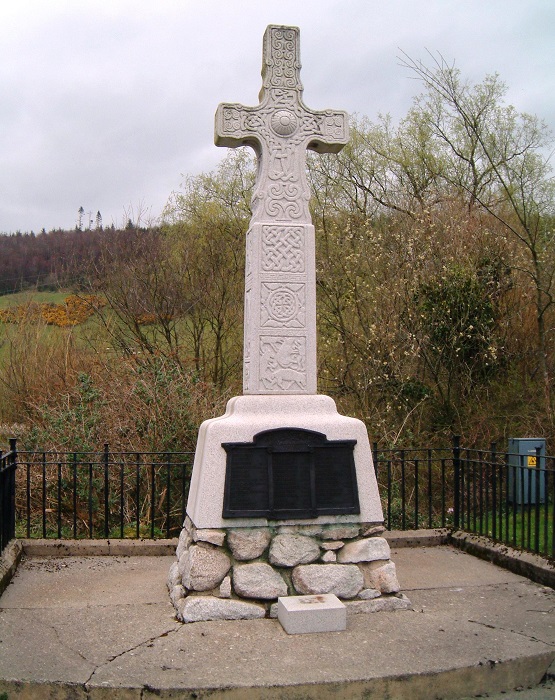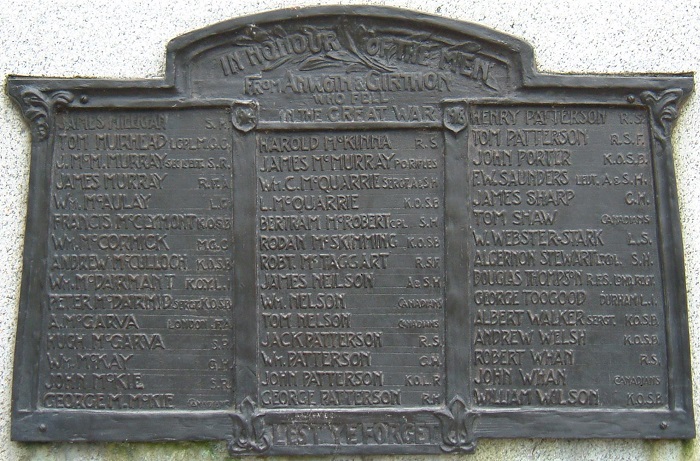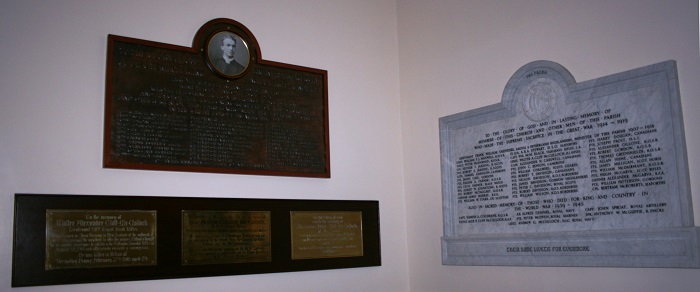Page last updated on: Tuesday, 20 March, 2018.
Anwoth & Girthon War Memorial
at Gatehouse of Fleet
This war memorial is situated at the bottom of "The Cut" at the eastern entry to Gatehouse. The next 3 photos are of the plaques which are part of this memorial. At the bottom of this page is an explanation of some of the symbols used.
Those who died during WW1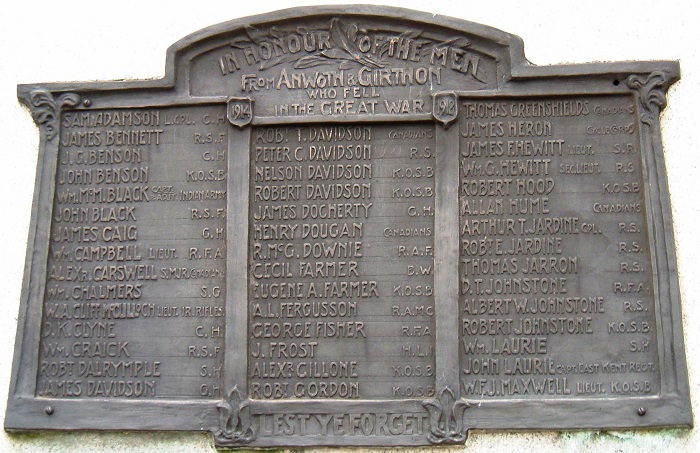
Those who died during WW2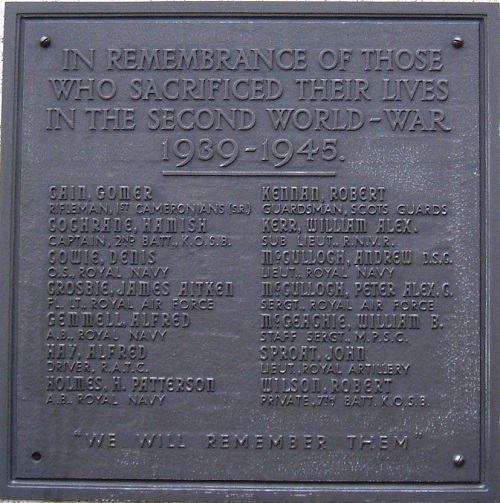
War Memorial Unveiling in 1921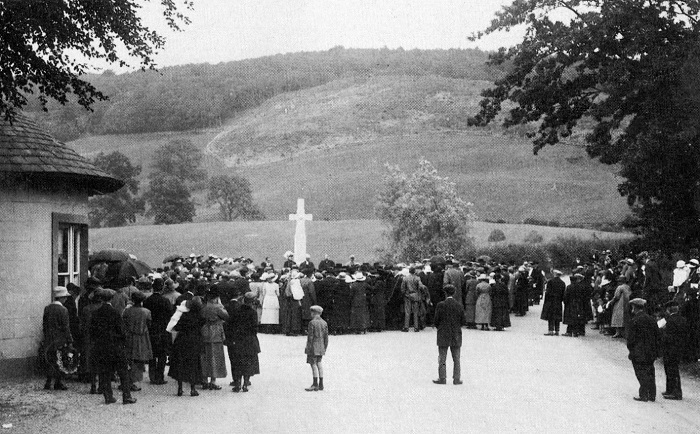
Commemorative Plaque from Anwoth Church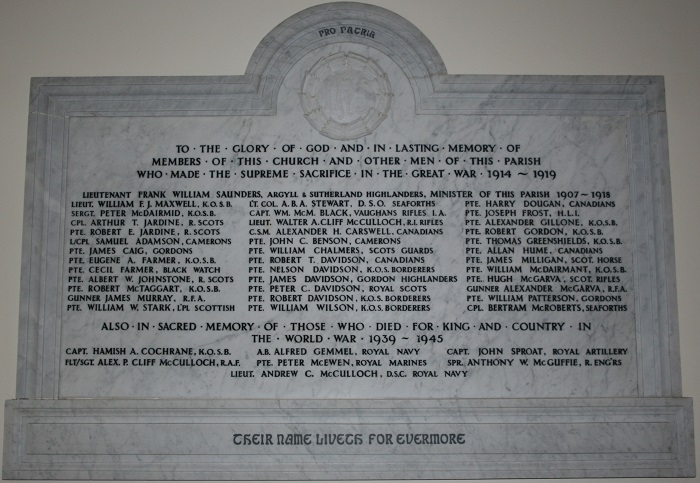
The memorial above is made of marble and has a marble surround. It hung in Anwoth Parish Church from October 1948 until the church joined with Girthon Parish in 1975. It commemorates those from Anwoth who died during both World Wars. It replaced a copper plaque of the same size and shape which had been dedicated in July 1921. The marble frame of the above memorial was in fact the same one that had framed the copper WW1 memorial.
The "redundant" copper plaque was stored in a disused building until it was included with rubbish that was sent to a skip hire company in Palnackie, where it was thankfully recognised and recovered. It has now been restored and hangs in the Gatehouse Parish Church having been re-dedicated in 2017. The photo below shows the renovated plaque, and the one below it shows the "Anwoth Corner" of the Gatehouse Church.
Plaques from Girthon Church and Girthon & Anwoth United Free Church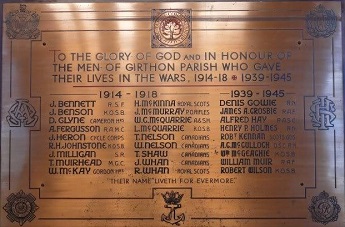

Plaques dedicated to Andrew McCulloch and 2 Alexander Cliff-McCulloch's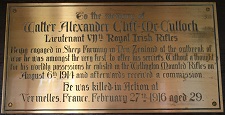
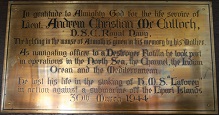
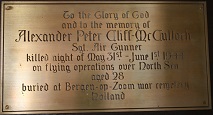
The symbols used on this cross
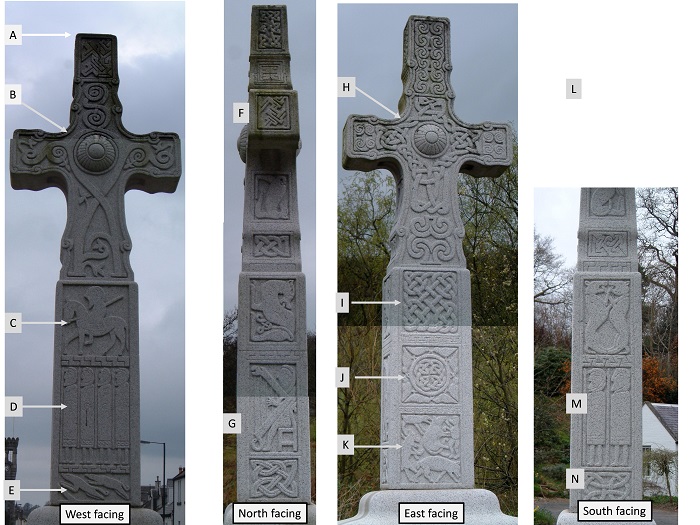
This "Anwoth & Girthon" War Memorial was based on the almost identical Pictish Dupplin Cross, which was made of red sandstone probably around 800 AD and was initially located on a hillside in Strathearn, across the river Earn from Forteviot and Dunning. In 2002 Historic Scotland arranged for the Dunning Cross to be relocated inside St. Serf's Church in Dunning.
There is a plaque alongside the Gatehouse War Memorial which describes the 4 sides of the cross. However it would appear that the pictures and notes on that plaque refer to the Dupplin Cross, and whereas both crosses are nearly identical, there are at least 2 differences. The notes below are copied from the plaque and the 2 differences are explained afterwards.
- The cap of the cross is tegulated, as on Irish high crosses
- The ornate head of the cross, with its prominent boss, is distinguished from the shaft. The vine-scroll filling the arms, inspired by Northumbrian art, is a feature of other prestigious Pictish sculptures. Amongst other things, it evokes the wine used in the Eucharist.
- This rider is probably King Constantine, note how the convention of a prominent head and moustache is used to designate authority.
- Four young warriors, distinguished in rank from those to their left, by lack of moustaches and less ornate garments.
- Hunting dogs to chase (full hunting scenes are common on Pictish sculptures).
- Ornate abstract and animal designs fill the sides of the cross.
- The biblical King David strums his triangular (Pictish) harp: ‘Give praise to the Lord on the harp’ (Psalm 33, v2)
- The ornate head of the cross, with its prominent boss, is distinguished from the shaft by its different decorative treatment, a Northumbrian trait. Iona is the likely source for the double-curved arm.
-
This panel was thought to be blank but in fact contains seven lines of inscription, the longest Roman alphabet inscription on an early mediaeval sculpture in Scotland. Barely decipherable it reads,
CU […] NTIN/FILIUSFIRCU/S. The Latin for ‘Constantine son of Fergus’ - A central roundel containing a cross in encircled by four pairs of birds, probably doves representing the Holy Spirit.
- A naked figure and his dog, presumably the biblical King David, confronts a lion. A second naked figure with a stick, again presumably David, seeks to kill a bear.
- Ornate abstract and animal designs fill the sides of the cross.
- Two senior warriors, (note their moustaches and ornate garments) form part of the guard for the king on the east face.
- The sculpture has had to respect the natural shape of the stone.
Notes :
1. the drawing of the Dupplin Cross showed unsculpted stone on the bottom right side of the South facing side which is also present on the bottom left side of the West facing side. This was in fact a place where the stone of the original cross was not big enough for the complete design, a shortcoming which did not befall the Gatehouse Cross.
2. note 'I' above refers to an inscription - this has been replaced by a Celtic design.on the Gatehouse Cross.
